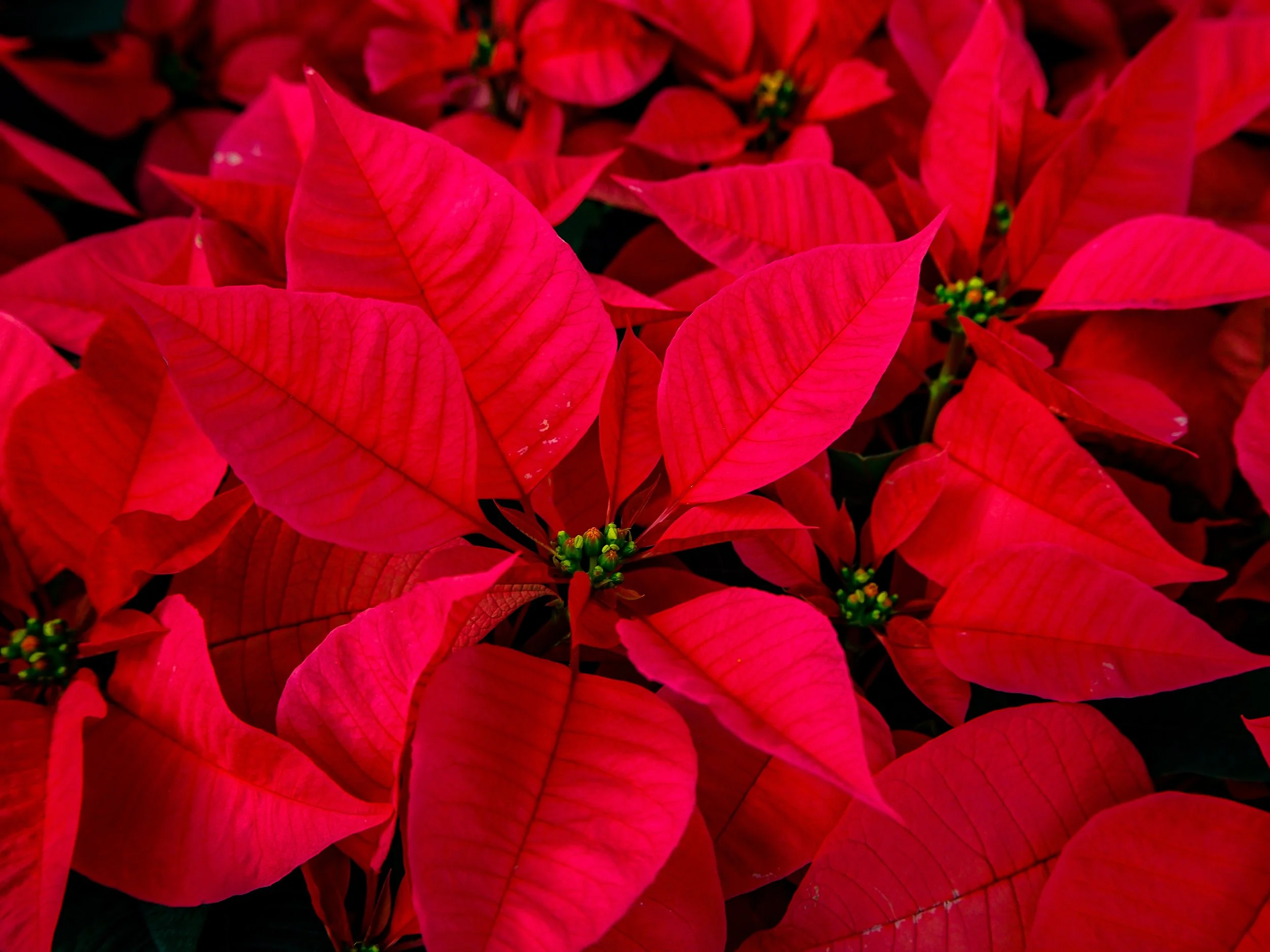Flower of the Holy Night
According to the Old Farmer's Almanac, poinsettias are perennial shrubs that were once considered weeds in their native region of southern Mexico. Flowering in the winter season, the bushes can grow 10 to 15 feet tall in the wild, and the Aztecs used their colorful leaves to make reddish-purple dye for fabrics and their sap as a medicine to control fevers.
When a young beggar child named Pepita did not have a gift to bring for baby Jesus during a Christmas Eve service in her small Mexican village, she picked weeds from the roadside and formed a bouquet to place at the nativity. According to Mexican lore, angels turned the leaves of the Flor de Nochebuena (Flower of the Holy Night) a beautiful deep red and green, our colors for the Christmas season today, and the star-like pattern of the colored leaves glowed like the Star of Bethlehem.
In 1828, Joel Roberts Poinsett -- the first U.S. ambassador to Mexico -- was an amateur botanist who was entranced by the red flowers when he visited the Mexican town of Taxco in the state of Guerrero. Poinett sent cuttings back to his plantation property near Georgetown, South Carolina, where he grew and shared his "Mexican Fire Plant" that was soon renamed in his honor.
In the 1920s, Paul Ecke discovered a technique to tame the wild bush by encouraging seedlings to branch at his California greenhouse, and he began growing tens of thousands of beautifully colored poinsettias for Christmas -- a time when other flowers were difficult to find. In a marketing push, Ecke sent the crimson-colored plants to TV studios across the country one Christmas season, and their appearance as decor on The Tonight Show and Bob Hope's holiday special set the stage for the poinsettia's enduring popularity. More than 2 million poinsettias will be sold this Christmas season, and the United States -- California, in particular -- now grows more than 100 varieties of the Christmas shrub in shades of red, pink, white, and yellow.
Poinsettias are the largest potted flower crop grown in the United States, and their popularity began with the story of a poor child who picked a bouquet of roadside weeds as a gift for baby Jesus.
The Lord himself will give you a sign. Behold, a young woman shall conceive and bear a son, and shall call his name Immanuel.-- Isaiah 7:14
As you enter the Christmas season, what signs will you seek from the Lord? How well will you listen when his Spirit nudges you, reminding you of the hope and joy of this special season?
Peace on your week,
Jennie

